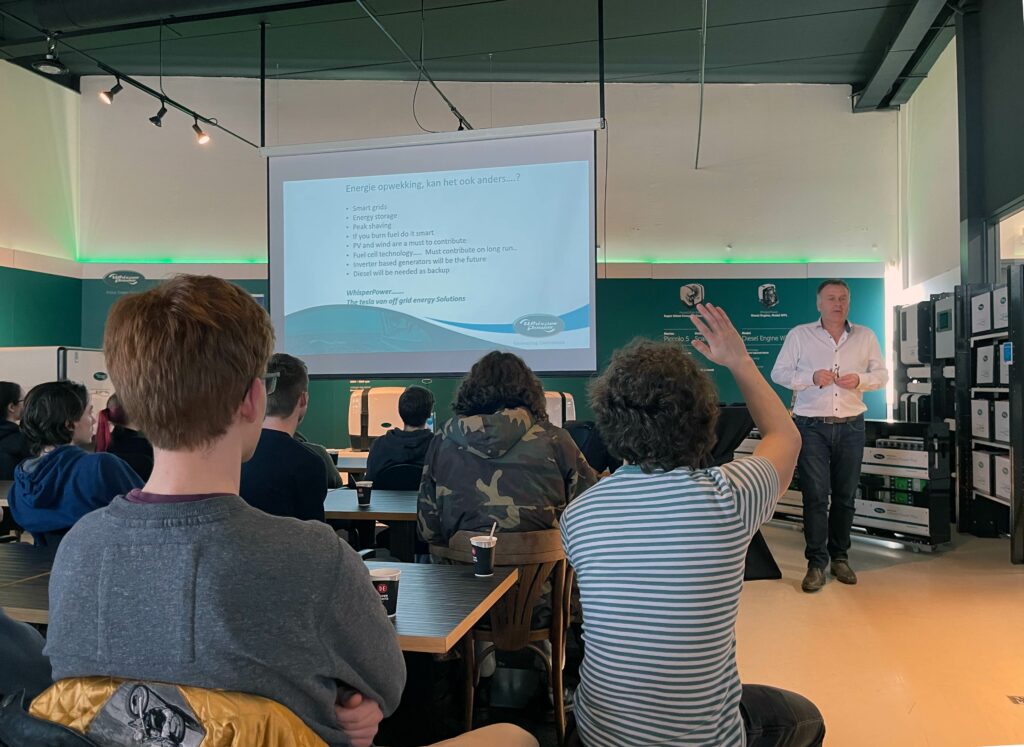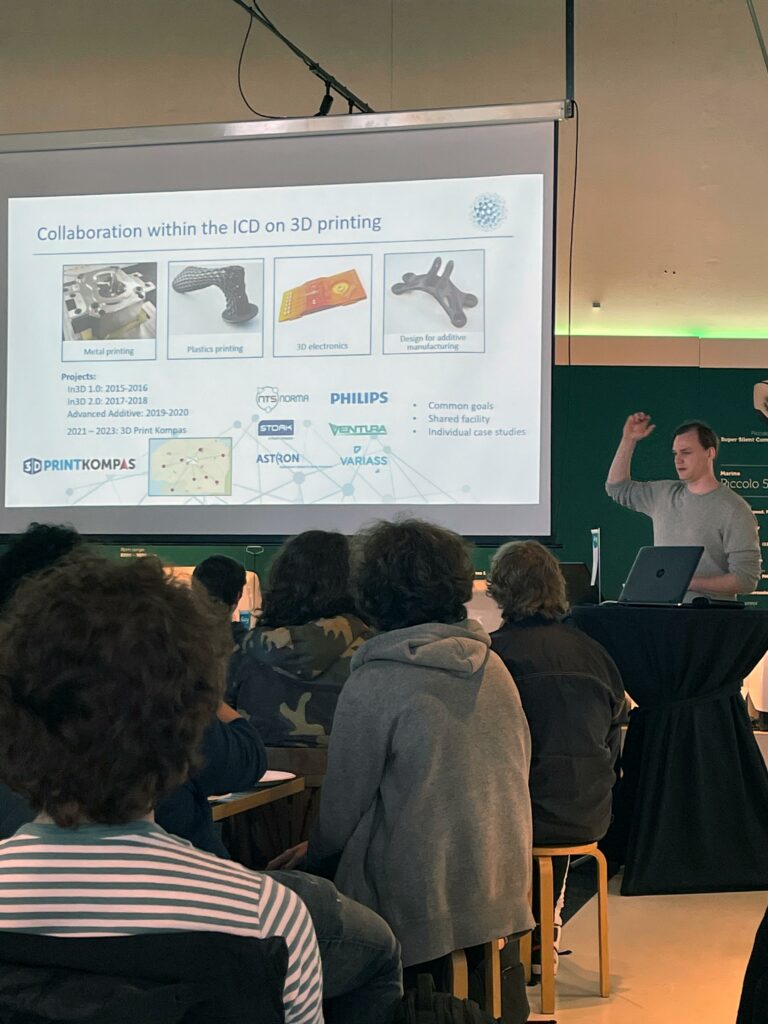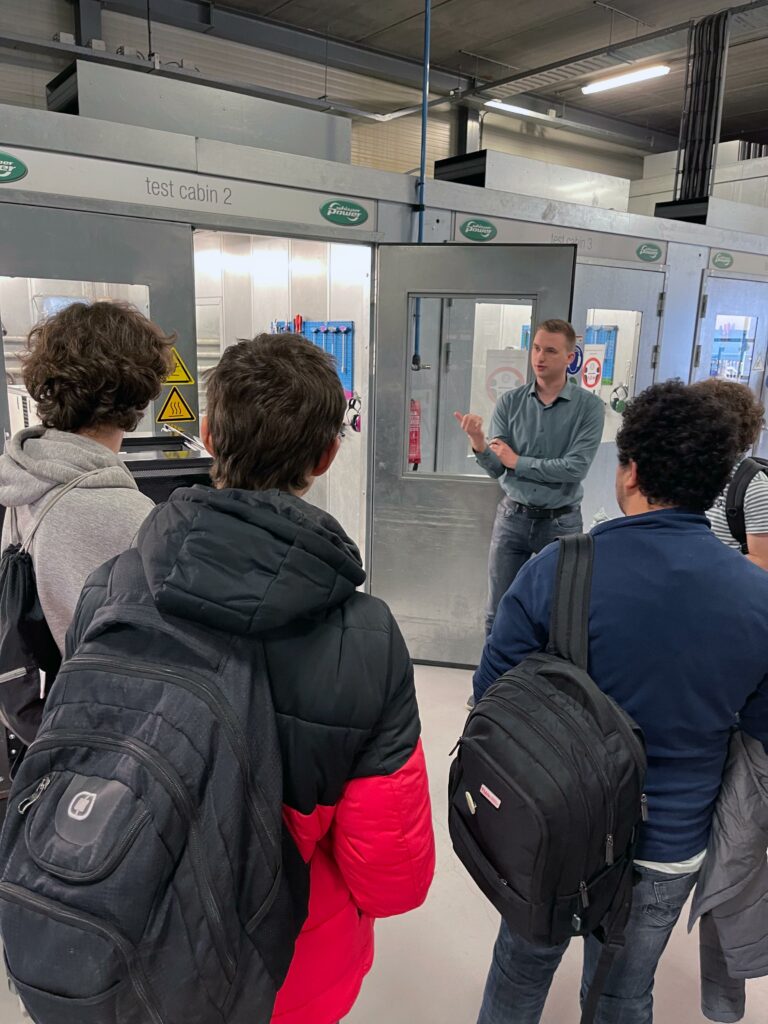
High Tech Safari for Applied Physics students
News | March 31, 2022
On March 22, the High Tech Safari took place for students of the Study Association for Applied Physics 'Johannes Diderik van der Waals' from Eindhoven. This was a special safari, as it was the first since the corona pandemic.
Martijn Favot, R&D manager at WhisperPower, kicked off and welcomed the students into their large showroom where he took them into the world of off grid energy systems, grid-independent electrical system solutions using energy-efficient and environmentally friendly components. These components are used in low-emission power systems for the international maritime, mobile and off-grid markets. Martijn talked about the latest innovations and how you can deliver reliable solutions with the combination of sustainable sources, batteries and back-up systems. The latest possibilities in remote sensoring (the remote monitoring of performance) were also discussed, such as with the RHS trucks in the United Kingdom that are driving around for population screenings.
They also got a look at the WhisperPower factory in Drachten, where they were guided along the assembly lines of single and double piston systems, rooms for function tests and the large warehouse, from which worldwide deliveries take place. Here they could literally see and feel the hardware.


Winand Slingenbergh, Additive Manufacturing Engineer Grooming & Beauty at Philips gave a presentation about the activities of the ICD and the affiliated companies. He also shared all kinds of new insights about 3D metal printing. Winand has an MSc in Applied Physics from the RuG and started with 3D printing as a hobby. He has now been working with 3D printing on a professional basis for more than seven years. He talked about the collaboration with various ICD companies in the field of 3D printing, metal printing, printing plastics and 'design for additive' and explained the theory behind the various applications and what advantages they have. In practice it comes down to a lot of testing and trying things out.



After this lecture, the group left for Dwingeloo, where Johan Pragt, Group Coordinator at ASTRON gave a presentation about Big data in astronomy in combination with Intellectual Property. This was followed by a guided tour in two groups. A group entered the lab for an inside look at antennas, electronics and high-speed data computing led by Gijs Schoonderbeek, Instrument Engineer at ASTRON. Johan went with the other group to the LOFAR test field. LOFAR, or Low Frequency Array, is ASTRON's current huge radio telescope. The LOFAR telescope consists of tens of thousands of antennas, spread over the Netherlands and Europe, that receive radio waves from the universe. The two types of antennas collect radio waves between 10 and 80 Megahertz and 120-250 Megahertz (the radio FM band of 88-110 MHz has been filtered out due to interference).
The students were lucky. Completely unexpectedly, the old Dwingeloo Telescope started moving because an employee was tracking a satellite. It was a very impressive image.
This was followed by a guided tour in two groups. One group focused on the topics of electronics and high-speed data computing, led by Gijs Schoonderbeek, Instrument Engineer at Astron. Johan took the other group outside towards the telescope and the LOFAR test field. LOFAR, or Low Frequency Array, is a radio telescope from Astron. The LOFAR telescope consists of thousands of antennas that receive radio waves from the universe. There are two types of antennas: the blades and the antennas in the black boxes, which pick up radio waves between 10 and 80 Megahertz and 120-250 Megahertz, respectively.
The students were lucky. They were unexpectedly shown a moving telescope because an employee was tracking a satellite. It was a very impressive image.
The students were very enthusiastic about this interactive safari, which provided them with many new insights.


